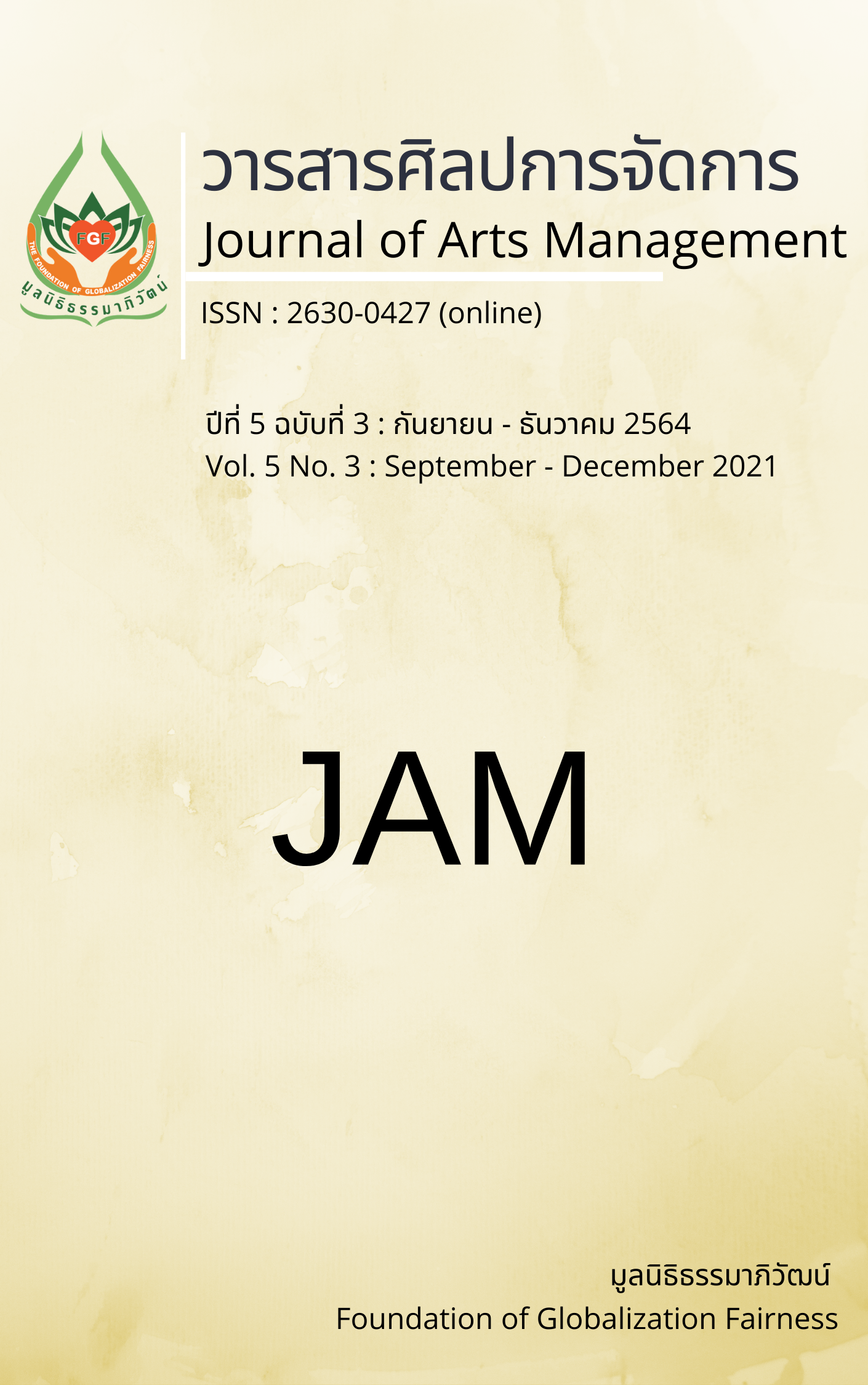Vocabularies on Elephant in language and Thai Culture
Main Article Content
Abstract
The purpose of this research is 1) to study and collect vocabulary on 'elephant' in the Royal Institute Dictionary 2011, 2) to study and collect vocabulary on 'elephant’ in the Thai Encyclopedia, and 3) to study the relationship of language and Thai culture from the vocabulary on to 'elephant'. The results of the research revealed a term related to ‘elephant’ of 183 words, divided into 9 vocabulary categories, as follows:1) Vocabulary about the meaning of elephants (synonym), 33 words 2) Vocabulary of genre and species of elephants, 32 words. 3) Vocabulary of tools and appliances related to elephants, 28 words. 4) Vocabulary about positions and duties of elephants, 22 words 5) Vocabulary related to organs of elephants, 20 words 6) Miscellaneous vocabulary about elephants, 19 words 7) Vocabulary about elephant verbs, 17 words 8) Vocabulary about traditions and rituals of elephants, 10 words, and 9) Vocabulary about elephant’s food, 2 words. Moreover, the researcher found the vocabulary on elephants in the category of synonyms the most which represents the richness of the Thai language with a large number of words that are appropriate for the context. The researcher analyzes the elephant vocabulary about the relationship between the Thai language and culture which found that there are 183 words of elephant vocabulary divided into 53 words of material culture and 130 words of mental culture. In terms of current language usage, the word 'elephant' has changed from being a 'noun' which refers to something concrete only into being an 'adverb' adding a new function of the word which is abstract. So the Thai language relates with Thai culture on vocabulary about 'elephant' according to reveal the word history and language evolution.
Article Details
Views and opinions appearing in articles in the Journal of Arts of Management It is the responsibility of the author of the article. and does not constitute the view and responsibility of the editorial team I agree that the article is copyright of the Arts and Management Journal.
References
Government Gazette. (2001). Announcement of the Office of the Prime Minister regarding the Determination of the National Symbol of Thailand. http://www.ratchakitcha.soc.go.th/DATA/PDF/2544/D/099/1.PDF
Intayod, P. (2006). An analysis of lexical differences in Pojchananukrom chabab rachabanditthayasathan 2525 B.E. and Pojchananukrom chabab rachabanditthayasathan 2542 B.E.[Master’s Thesis, Thaksin University].
Prapapitayakorn, P. et al. (1984). Language and Culture (2nd ed.). Aksorn Charoenthat.
Rattanasang, B. (1998). Language and Culture. Odeon Store.
Royal Institute. (1969). The Thai Encyclopedia for Youth His Majesty King Bhumibol Adulyadej Maha Bhumibol Adulyadej the Great's royal wishes. http://saranukromthai.or.th/index2.php
Royal Institute. (2011). The Royal Institute's Dictionary, 2011. Siriwattana Interprint Public Company.
Saeng-arunchalaemsuk, S. (2019). The formation of animal terms in new words dictionary of Royal Institute Issue. Phetchabun Rajabhat Journal, 21(2), 79-86.
Sethiankoset (Anumanratchathon, Phraya). (1972). Culture. Bannakarn Publishing.
Vajirayana. (n.d.). Announcement King Rama's Gathering 4: Part 2, Section 26: Declare pronouns for elephants and horses. https://vajirayana.org


